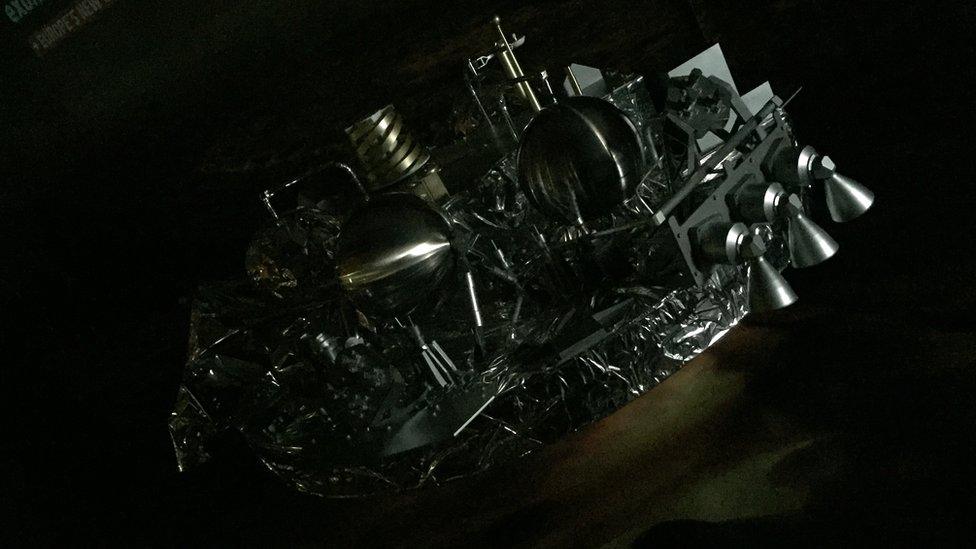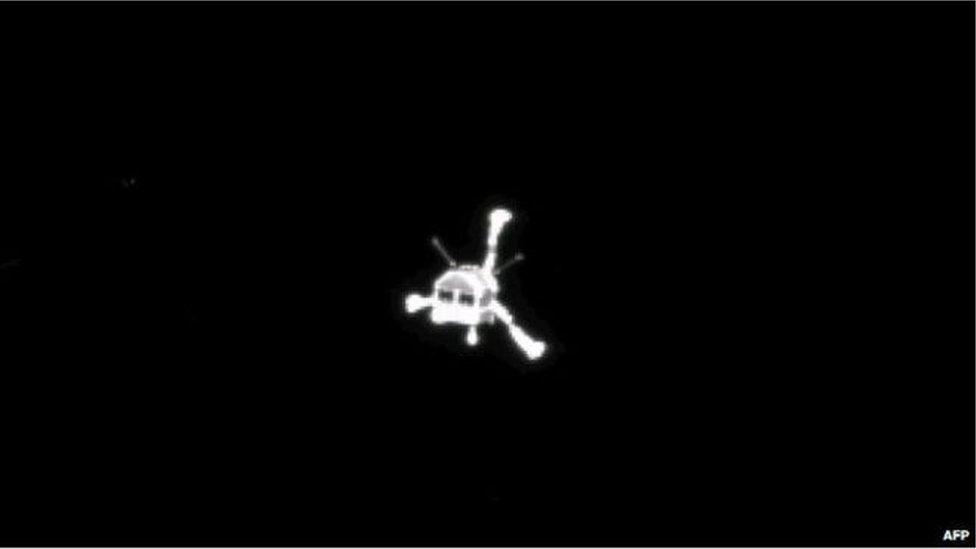Schiaparelli: The imperative to touch another world
- Published

"Dare to fail" is one of those mantras that engineers like to repeat. It's how you learn.
That is certainly the attitude being taken by the European Space Agency (Esa) in the wake of its Schiaparelli mishap.
The probe's telemetry is still being analysed but it looks increasingly like the Italian-built robot did not make a soft landing on Wednesday.
Quite the contrary. It very probably hit the ground at high speed after jettisoning its parachute too early and firing its thrusters for only a few seconds.
But Esa is holding to the line that no firm conclusions can be drawn until a full reconstruction of events is made from the telemetry.
And even if it is shown that Schiaparelli crashed, we should still consider it a partial success. The reason? We will know why it didn't work and the lessons can then be taken forward to make sure the next landing achieves a better outcome.
To repeat another of those mantras: "You're allowed to fail so long as you understand why you failed."
Confidence builder
For Esa's ExoMars programme, of which Schiaparelli was a part, the stakes could not be higher, however.
The next phase - the next landing - for ExoMars would see a British-assembled rover try to put down on the Red Planet in 2021.
This six-wheeled robot is an expensive project and is already struggling to get the full funding it needs to proceed.
Decisions on its budget will now be clouded by what has happened this week.
Schiaparelli was touted as the technology demonstrator - the project that would give scientists and engineers the experience, expertise and confidence to go forward with 2021.
They will certainly have filled their store of knowledge. By the bucket load. But will Esa member-state ministers meeting in December still have the stomach for another Mars landing, and - more to the point - the enthusiasm to part with the 300m euros that is likely needed to carry the rover project through to completion?
In a press conference at Esa's mission control on Thursday, the agency's director-general Jan Woerner was bullish in his assessment of how member states would react. The progress that had been made would be "obvious" to them, he said. We'll see.
Making the case
At a minimum, the ministers will want the board of inquiry set up in the wake of Schiaparelli's apparent loss to report quickly, with a clear and detailed explanation of the things that went wrong and how they can be put right.
On the plus side, Esa officials can point to the outstanding success of getting Schiaparelli's "mothership" into orbit. The Trace Gas Orbiter, as it is known, has the potential to deliver some fascinating insights on Mars' atmosphere and what its rarest molecules might say about the existence of life at the Red Planet today.
Originally, no observations were planned for many months while the TGO tidied up its orbit. Now, mission mangers are expecting to squeeze in some early science, just in time for those end-of-year deliberations. A good performance would be timely and perhaps give the ministers a feel-good factor.
And then next week, the key parties working on the rover - including their Russian partners - will conduct a major review of the status of the much-delayed project.
The findings also will inform the coming budget discussions.
Public interest
It would be a massive blow to European pride if ministers decided to abandon the aspiration to land on Mars (and the cause of no little disappointment in the UK where rover prototypes have been significant "vehicles" for STEM inspiration and education).
It would also highlight Europe's deficiency in its exploration of the Solar System.
Beyond TGO, Esa has a satellite planned for Mercury and one for Jupiter. But neither is near-term.
The former doesn't get to its target until the mid-2020s, and the latter doesn't start serious science until 2030.
There's a daring mission to fly close to the Sun that will launch in 2018, but that's not a planetary body - not one you can land on anyway.
And if we've learnt anything in the past couple of years with the Rosetta comet mission, it is that the public is most engaged when probes touch down on something.

The Philae lander after separation, captured by Rosetta's OSIRIS narrow-angle camera